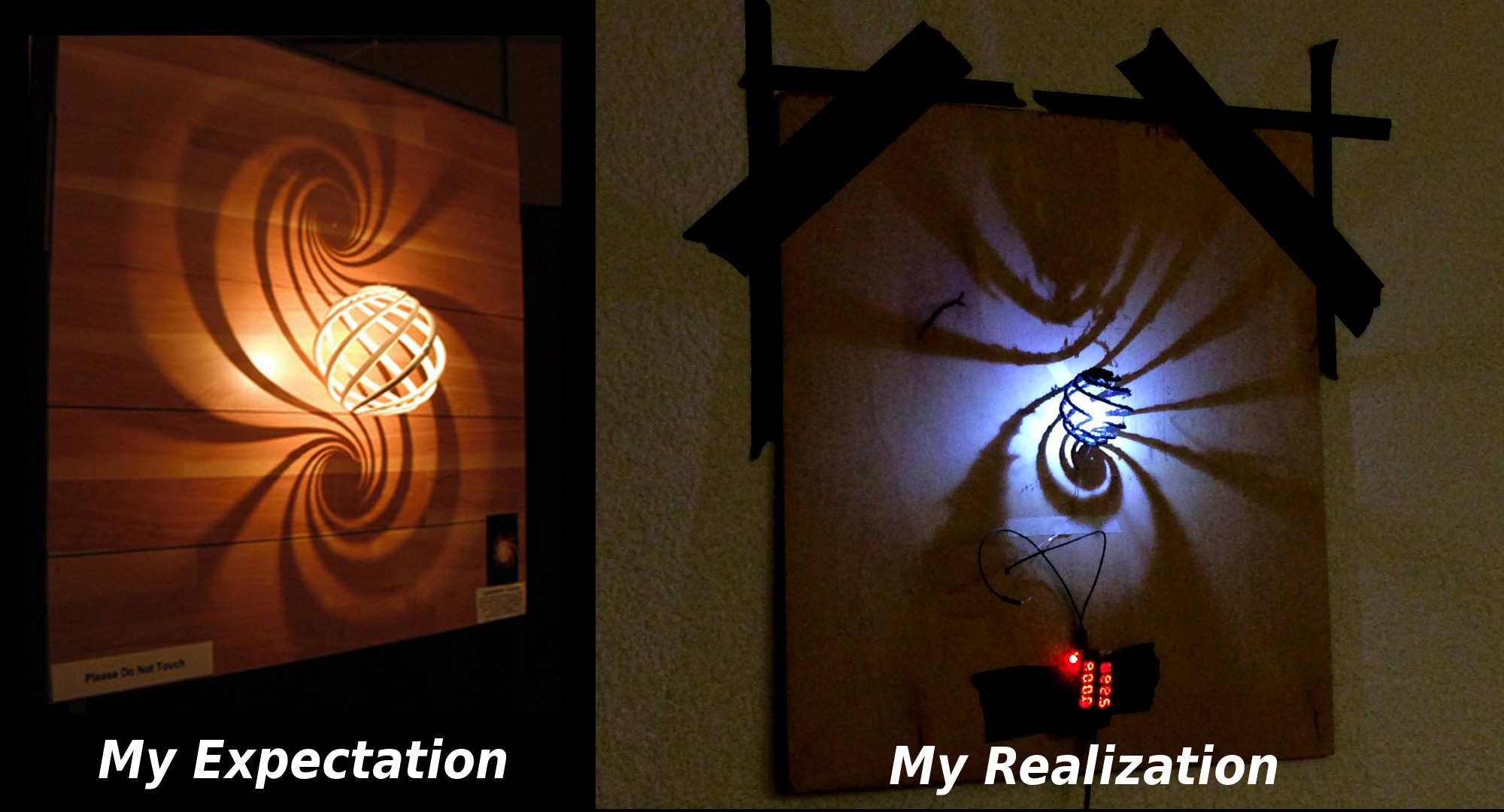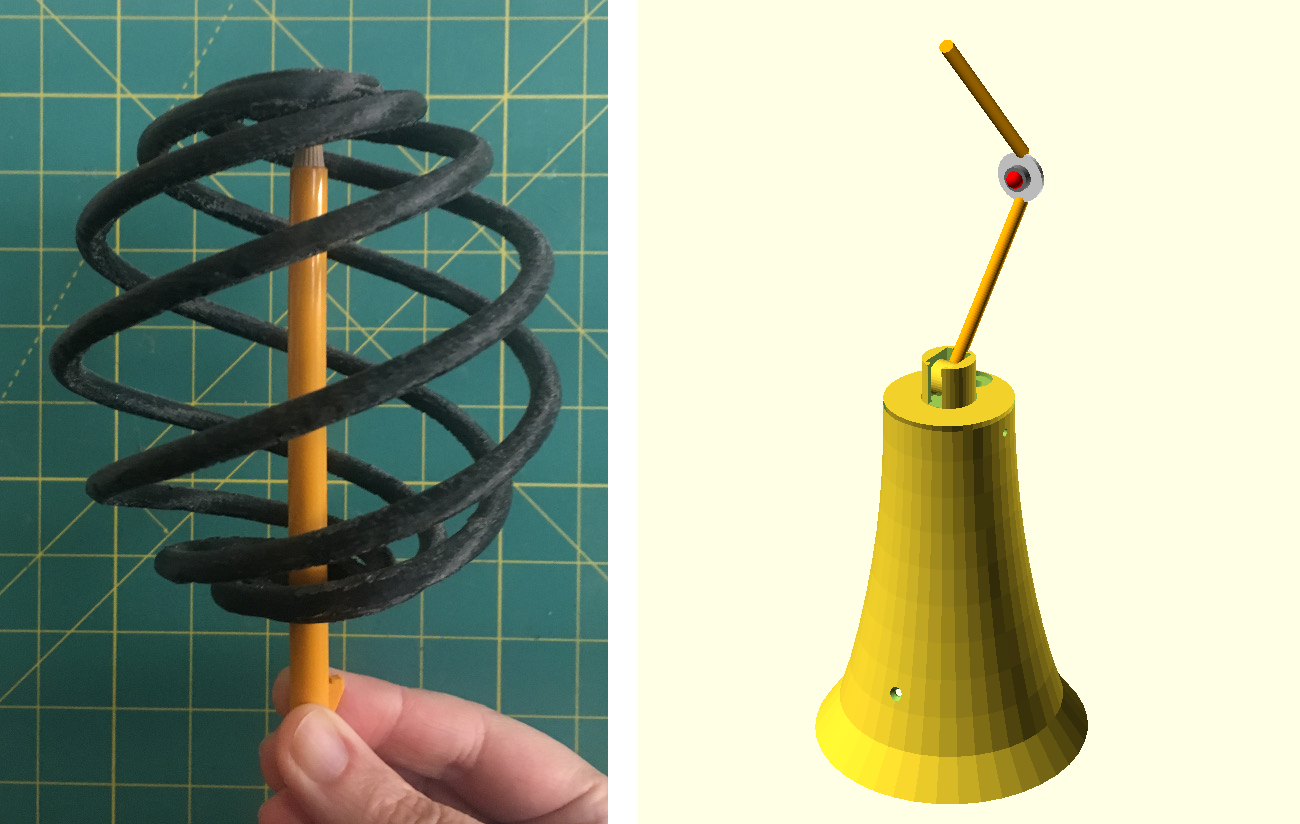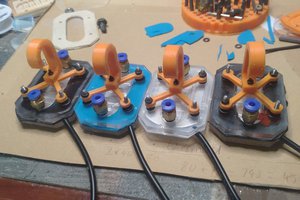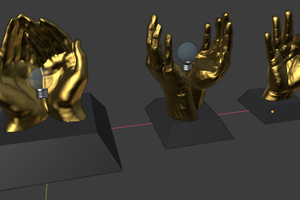The Inspiration:
My project was inspired by Paul Nylander's "Loxodrome" wall sconce (http://bugman123.com/). I had recently bought my first 3D printer on Kickstarter and I knew that the Loxodrome sconce was something I wanted to tackle.
Once I became a little more experienced in 3D printing, I set out to see if I could recreate Paul's work. Having found kitwallace's OpenSCAD implementation of the Loxodrome, I printed a small version and made a comically jury rigged mockup using some plywood, a white SMD LED, a power supply and copious amounts of blue painter's tape (because I didn't want to drive nails into my wall!).

As silly as it looked, it got me thinking about how to take it to the next level.
Taking the Loxodrome for a Spin:
Not soon after I put together my mockup, I realized it would be much better if the Loxodrome could turn on its vertical axis, therefore projecting a rotating pattern of shadows on the wall.
This presented a challenge, as the Loxodrome could no longer be attached directly to the board, nor could the LED be attached to a spiral arm of the Loxodrome. For it to rotate, the Loxodrome would need to turn freely, with the LED and associated wiring suspended independently inside the rotating shell.
I modified the Loxodrome in OpenSCAD to add a 18 mm diameter opening on the bottom and a small cap at the top that would allow the Loxodrome to balance and rotate freely on the tip of a pencil.
Having found a way to make it spin, I decided to make my next prototype into a free standing table lamp.
My original lamp consisted of a tapered base with a bent piece of copper tubing on top. The copper tube would support a LED, as well as provide a tip for the Loxodrome to rest and spin around on. I replaced the dim SMD LED with a 1W white LED star for improved brightness.

Trying to Make it Turn on its Own Made my Head Spin:
I now had a freely spinning Loxodrome and a way to mount the LED inside it. However, the Achilles' heel of this design was the fact that the Loxodrome was hanging loosely on the pivot point. Making it turn on its own proved to be challenging.
At first, I mounted small ring of magnets on the bottom of the Loxodrome near the opening and tried to use a hand-wound solenoid to make the Loxodrome to turn. This merely caused it to stutter and vibrate.
Shelving that idea, I replaced the magnets and solenoid with a toothed ring (red) that would mesh with a smaller gear. The smaller gear (green) was attached to a shaft leading to a TYD-50 AC synchronous motor I hid in the base. Unfortunately, because the Loxodrome was hanging freely from the top, it could swing away from the teeth of the gear, often skipping a tooth rather than turning. Sometimes, because of roughness in the printed parts, it would freeze up momentarily, only to jerk loose, leading to a very jumpy, unsatisfying motion. Although it showed that using gears had potential, at that point it was far from an effective solution.
For a while, I put the project aside until further inspiration came to me.

Improving the Design, With Better CAD Tools:
My initial failures taught me several lessons. Hanging the Loxodrome on a pivot point from the top made...
Read more » marciot
marciot



 Bolzbrain
Bolzbrain
 foulum.mosegaard
foulum.mosegaard

 Sander van de Bor
Sander van de Bor
Very well planned and executed. In my opinion this is a project in the running for a win.